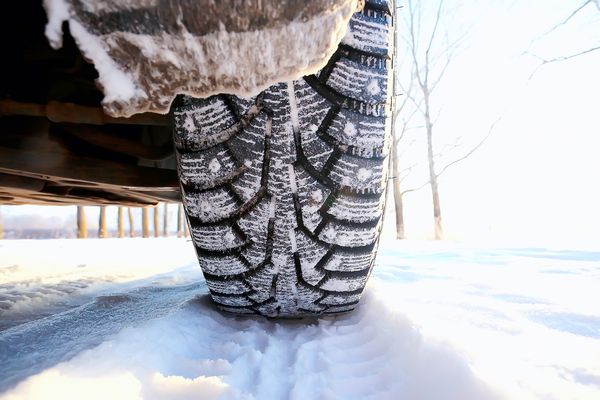
Car accidents are sadly commonplace in the state of Texas. In 2021, Texas experienced 15,764 serious injury crashes that resulted in 19,448 individuals sustaining serious injuries. While a majority of these accidents are often caused by individuals making poor decisions on the road such as speeding or not checking their blind spots when merging lanes, some of them were caused by poor road conditions.
Poor road conditions can be anything from slick roads due to rain or ice to missing guardrails on the interstate. While inclement weather is in no one’s control but mother nature, road maintenance is under the legal obligation of the city and state. If an individual is in an accident due to poor road conditions that are a direct result of poor road maintenance or design, legal action can be taken to ensure that the liable party is held responsible. This action can be done through the court system by first going through a claim filing procedure. Here is what you need to know:
Who Is Responsible For Road Maintenance?
The responsibility of road maintenance falls to the city, county, or state that the certain roadway falls under. Responsibilities for some roads may fall under the jurisdiction of more than one governmental agency.
For example, the state might be in charge of filling potholes or ensuring that roads are properly paved, while the city may be in charge of de-icing roadways or prepping roadways for ice during a storm. Understanding which governmental agency is responsible for the particular condition that caused your accident is a huge part of determining the right party to take action against.
Typically though, your county or city government will be responsible for maintaining local roads while the state government is in charge of maintaining highways and interstates.
What Is Considered Poor Road Conditions?
According to the report from the White House, one in five miles of highways and major roads, and 45,000 bridges, are in poor condition.
Here are some common examples of poor road conditions that can lead to damage to your vehicle:
- Potholes
- Missing barriers and guardrails
- Shoulder drop-offs
- Uncleared ice and snow
- Poor road design
- Wheel ruts
- Unsafe construction zones
- Oil and chip
How to Prove Negligence in Road Maintenance or Poor Road Planning

Once you can determine whether it is the county, city, or state government agency you need to go after, the next step is to prove that the poor road condition or planning was a direct cause of your accident or injury. To do this, you must show that the agency responsible had reasonable notice of the issue with the road and had a reasonable time to fix it after being notified of the situation but failed to take the proper steps to do so. The failure to fix the road is what caused the accident.
Here is an example:
The roads around your neighborhood have been suffering from erosion and potholes over the last year. The potholes have only gotten worse, despite the numerous reports from you and your neighbors about the potential safety issues concerning the road’s condition. The state has done nothing to remedy the issue, and one night, while it is dark, your car hits the pothole just right to pop the tire and make you lose control of the car. You crash into another vehicle, resulting in abrasions from the impact, while the other driver can walk away with minor bruises. Your car is totaled, you have missed time from work to recover from your injuries, and your medical bills are stacking. In this case, it will be easy to show that proper reports and documentation about the potholes were given to the state agency but they did nothing to resolve the issue, which then resulted in your accident.
Can I Sue the State for My Accident?

The tricky part about pursuing this kind of legal action is that most government agencies have immunity from lawsuits (this includes both state and federal governments). This means that they cannot be sued without permission. To pursue legal action against a government agency, individuals will need to go through an administrative claim process that serves as a prerequisite for filing a lawsuit.
While negligence in maintaining the road can be considered wrongful conduct that can lead to a claim being accepted, there may be some constraints that need to be considered. For example, in some cases, it needs to be proved that the negligence was “gross”, or in other words, obvious.
What Do I Need to Make a Claim?
The first thing you will need to do is gather information to get your claim started. You’ll need the following information:
- The name of the road and the direction you were traveling
- The exact location of the road hazard or poor road condition
- Names and contact information of any witnesses
- Physical characteristics of the road or hazard
- Pictures of the poor road condition goes a huge way
It is important to note that under Texas State Law, you only have six months starting from the moment the accident occurred to file your claim. Failure to file your claim within this time frame can lead to your claim being denied or ignored.
Improve Your Chances of Getting the Compensation You Deserve
When it comes to filing a claim and a personal injury lawsuit against a government agency for poor road conditions that caused your accident, there is a lot of red tape to navigate through. Having an experienced car accident attorney on your side can help improve your chances of getting the compensation you deserve for your accident. The experienced team at the Hernandez Law Group, P.C. can guide you through the legal process and be with you every step of the way, taking care of cutting through the red tape while you focus on your recovery. Contact our team today for more information on our services or to schedule your free no-obligation consultation to go over the specifics of your case.
